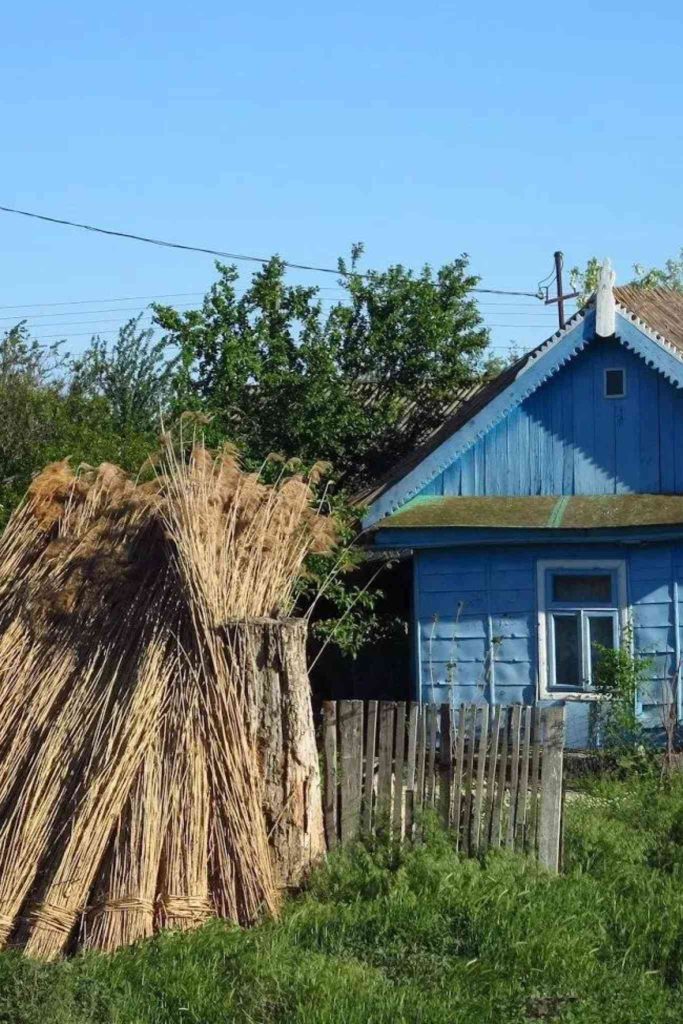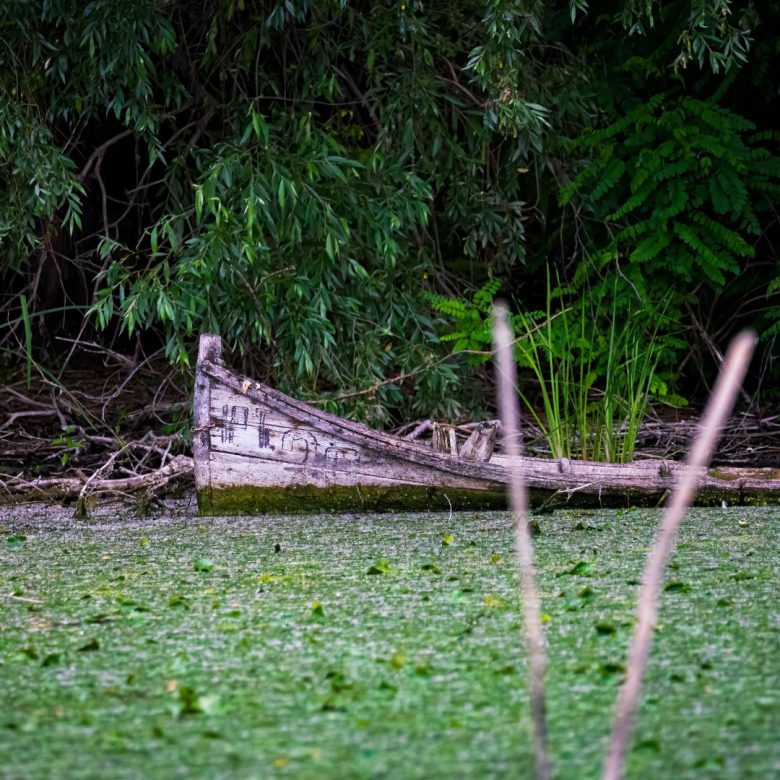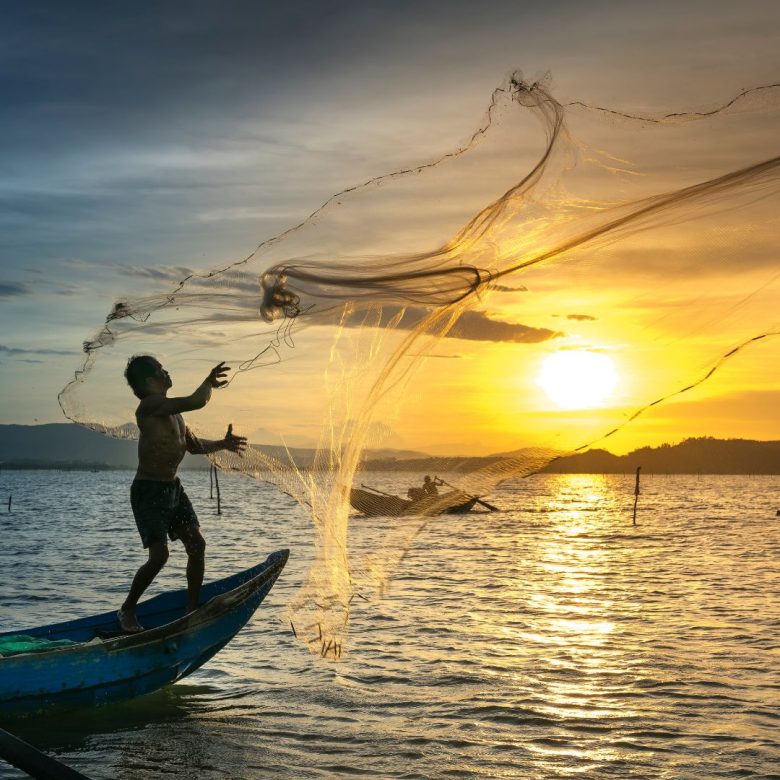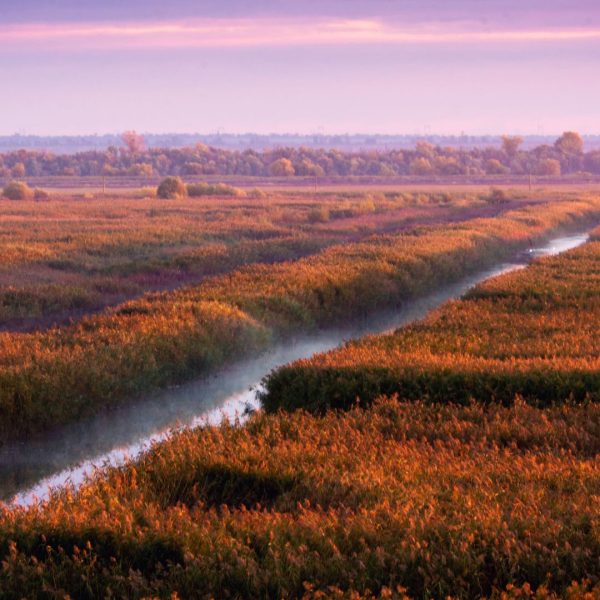Mila 23 Village
Milla 23 Village
The well-known fishing village of Mila 23 epitomizes the beauty and distinctiveness of the Lipovan Russian village, admired for the traditional architecture of the Lipovan Russians’ houses in Dobrogea. Located on the Old Danube branch of Sulina, in the Crișan commune of Tulcea County, Mila 23 stands out with its whitewashed houses that feature windows, doors, porches, and decorative wooden friezes painted in “siniliu,” an ultramarine blue hue characteristic of Lipovan villages.

Access to Mila 23 Village
The traditional homes of the Lipovan Russians in Mila 23 attract both Romanian and international tourists through their distinctive architectural style. These old houses feature extended porches and are built lengthwise from natural materials. Lined along wide streets, the homes are vividly painted in shades of green and blue, have reed roofs, and their main façade faces the yard, while the secondary one faces the street. The small wooden windows are painted in siniliu blue to keep mosquitoes at bay.
The wooden friezes (triangular architectural elements bordered by a cornice above the entrance), beams, and porch pillars are adorned with floral, embroidered, geometric, and aquatic motifs representing fish. A leisurely 20-minute stroll allows one to traverse Mila 23 from one end to the other, enjoying the old streets, traditional village stores, and guesthouses with piers on the Danube’s bank.
Location
Access to Mila 23 Village is exclusively via water, deep in the Delta, 53 km from Tulcea (roughly halfway between Tulcea and the Black Sea). The village community is small, with about 450 residents primarily comprised of skilled Lipovan Russian fishermen. In recent years, local occupations have expanded into tourism due to the growing interest of tourists in the enchanting landscapes and variety of species here and in nearby protected areas.


En Route to Mila 23 Village
Mila 23 is a unique destination not to be missed by nature lovers, tradition enthusiasts, birdwatchers, nature photographers, and those seeking unique experiences in the Danube Delta. Europe’s largest colony of great white pelicans, located at Roșca-Buhaiova, is just a short distance from the village. The fascinating routes through the surrounding channels and lakes offer a color spectacle at every sunrise and sunset, featuring impressive flocks of pelicans, cormorants, and herons.
The villagers of Mila 23 are among the most skilled fishermen in the Danube Delta, making the village a renowned meeting spot for anglers in search of authentic fishing experiences. The locals, comprising various ethnicities (Russian-Lipovans, Ukrainians, and Turks), are passionate about their traditional fishing boats. The Lipovan Russian traditional cuisine maintains generations-old fish-based recipes devised by fishermen. The main pier is located in the village center.
Mila 23 is famous due to the greatest canoeist of all time – the living legend Ivan Patzaichin, a four-time Olympic champion in canoe-kayak, a Lipovan born and raised in Mila 23 among the fishing boats.

Historic Background
The village was founded in the early 19th century by Lipovan fishermen. The Lipovan Russians in Romania are Old-Rite Orthodox Christians, known worldwide as Starovers (Old Believers) or Staroobradtsy (Old Ritualists). The Great Schism in the Russian Church in the 17th century prompted the migration of hundreds of thousands of Russian Starovers who did not accept the reform. From the 18th century, the Starovers settled in Romanian territories under the name Lipovans.
Today, the community of Russian-Lipovans in Romania numbers about 50,000 people, primarily residing in Tulcea County. In Mila 23, Russian-Lipovans constitute two-thirds (2/3) of the population (approximately 450 residents). The current name of the village derives from the nautical marker of Mile 23, representing the distance from Sulina (Mile 0).


